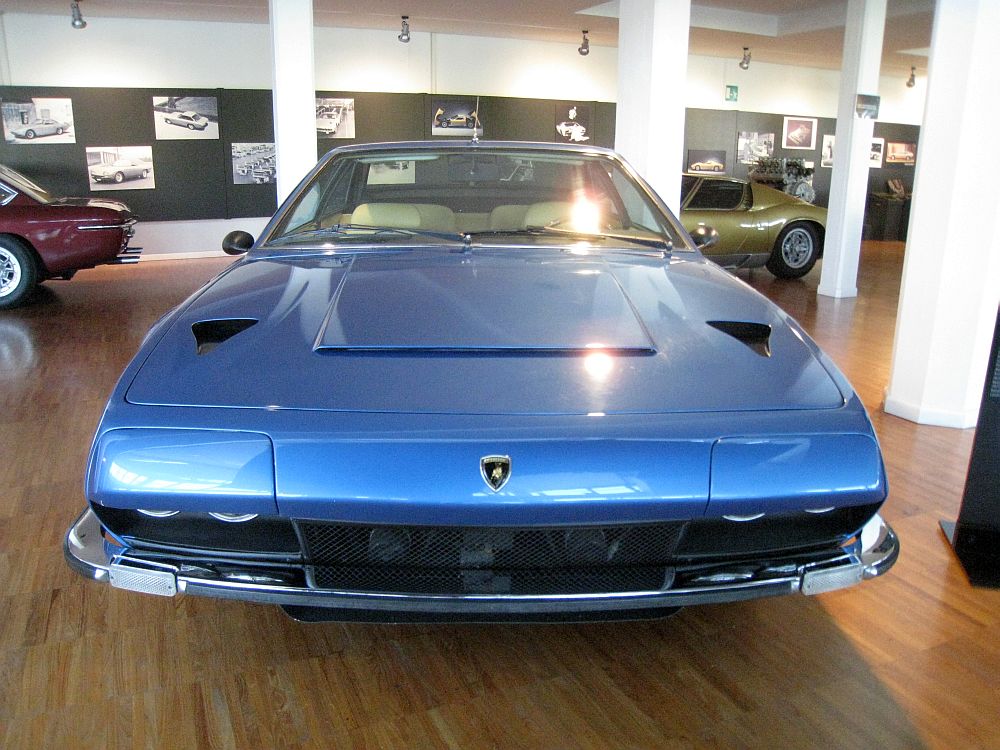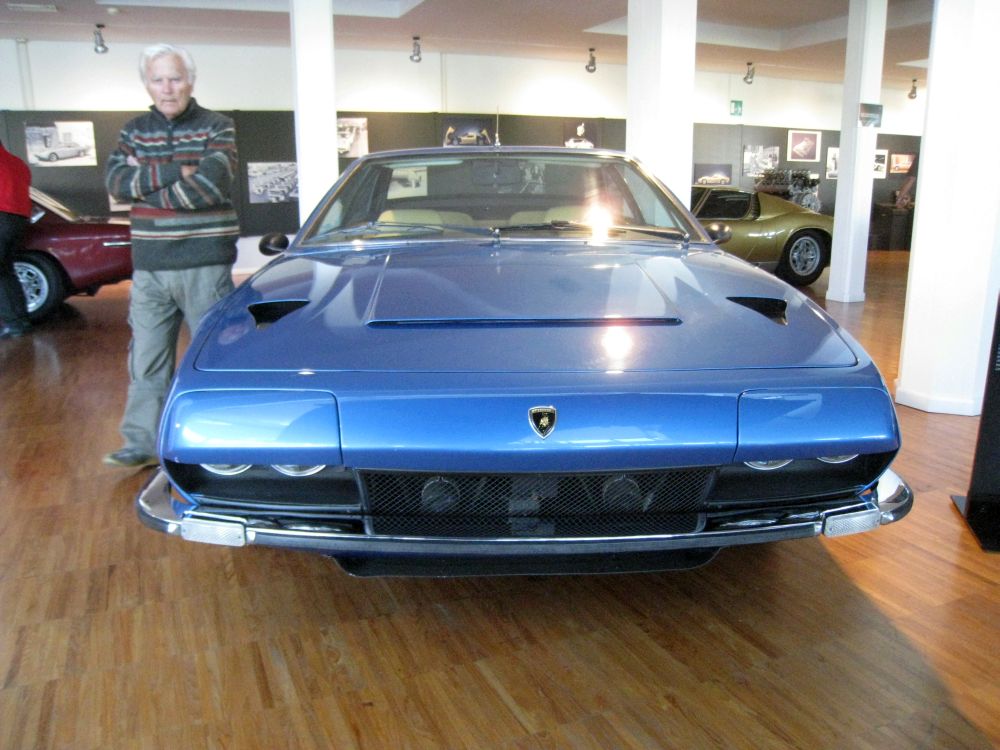Description
The Lamborghini Jarama S 400 GT 2+2, introduced in 1972, was the refined and more powerful evolution of the original Jarama 400 GT. It represented the last chapter in Lamborghini’s front-engined V12 grand touring lineage, combining Italian craftsmanship, muscular performance, and a uniquely angular elegance. More than a mere revision, the Jarama S refined its predecessor’s concept into one of the most sophisticated and livable Lamborghinis of the early 1970s—a car that could travel across Europe at high speed in comfort, while still carrying the unmistakable presence and sound of a Lamborghini V12.
The Jarama S (sometimes known as the Jarama 400 GTS) continued to use the robust, shortened version of the Espada chassis, with a wheelbase of 2,380 mm that gave it compact proportions and excellent agility. The all-independent suspension, featuring double wishbones with coil springs and telescopic dampers, provided a balance of ride comfort and cornering precision. The car retained ventilated disc brakes on all four wheels and rack-and-pinion steering, while the suspension was retuned for improved refinement and reduced road noise. These changes, together with subtle adjustments to weight distribution and steering geometry, gave the Jarama S a more settled and predictable feel at speed.
Under the long, flat bonnet remained the heart of the car—a 3,929 cc all-aluminium V12 engine designed by Giotto Bizzarrini and perfected by Lamborghini’s engineers. For the Jarama S, output rose from 350 to 365 horsepower at 7,500 rpm, with torque peaking at around 392 Nm. The increase came from revised camshafts, higher compression, and improved carburetion. Power was delivered through Lamborghini’s five-speed all-synchromesh gearbox to a Salisbury limited-slip differential. This combination gave the Jarama S true grand touring credentials: 0–100 km/h (62 mph) in roughly 6.2 seconds and a top speed of about 260 km/h (162 mph). Yet, despite its performance, the car was remarkably civilized—Ferruccio Lamborghini’s original aim for all his GTs.
Stylistically, the Jarama S maintained the sharp, angular form created by Marcello Gandini at Bertone but incorporated a number of visual refinements. The front gained integrated rectangular fog lamps, a subtly reshaped grille, and revised bonnet vents for improved cooling. The rear section was cleaner, with larger taillights and refined bumpers that gave the car a more modern appearance. The effect was a crisper, more purposeful look that still retained the Jarama’s compact, wide-track stance and distinctive cab-rearward profile. Flared wheel arches housed wider alloy wheels and tyres, emphasizing its muscular proportions.
Inside, the Jarama S received one of the most luxurious cabins ever fitted to a Lamborghini of the period. The interior was re-engineered for comfort, with higher-quality materials and improved ergonomics. Deep, padded leather seats offered greater support, and the dashboard was completely redesigned with a sweeping wood-veneered fascia housing a full suite of Veglia Borletti instruments. Air conditioning, power steering, and electric windows were standard, and optional automatic transmission was offered for the first time—a clear nod to the car’s grand touring ambitions. The cabin was quieter and more refined than that of the earlier model, making it ideal for long-distance driving without losing its mechanical character.
On the road, the Jarama S combined the thrust of a race-bred V12 with the manners of a refined touring car. The engine’s torque delivery was linear and effortless, allowing it to surge from low revs or explode into life as the tachometer climbed. The gearbox shifted smoothly, and the steering, now lighter and more progressive, gave a sense of precision rare for such a powerful car. The revised suspension tuning made the S more composed over rough roads, while the ventilated discs provided dependable braking performance. Its personality was dual: calm and controlled when driven gently, yet capable of ferocious acceleration and a spine-tingling exhaust note when provoked.
Although it was overshadowed in its day by the mid-engined Miura and later the Countach, the Jarama S appealed to a different kind of Lamborghini customer—one who valued elegance and discretion over flamboyance. Ferruccio Lamborghini himself famously described the Jarama S as his favorite of all the cars he produced, calling it “the perfect compromise between the Miura and the Espada.” It was the car he chose to drive personally, reflecting his belief that a true Lamborghini should combine performance with comfort and ease of use.
Production of the Jarama S 400 GT 2+2 was limited to around 150 examples between 1972 and 1976, making it one of the rarer Lamborghinis of its era. Each car was hand-assembled in Sant’Agata Bolognese, with the attention to detail and craftsmanship that defined Lamborghini’s early years.
Today, the Jarama S 400 GT 2+2 is admired as one of the most distinctive and underrated cars in Lamborghini’s history. Its bold Gandini styling, powerful V12, and sophisticated manners make it an exceptional example of the grand touring ethos that Ferruccio championed from the very beginning. It was the last of the classic front-engined Lamborghinis—a car that blended performance, comfort, and craftsmanship in a way that few others have matched since.
The Jarama S 400 GT 2+2 stands as a graceful conclusion to Lamborghini’s first great era of V12 GTs: a car of authority, refinement, and restrained power, capturing the essence of what it meant to drive fast with style, comfort, and quiet confidence.








